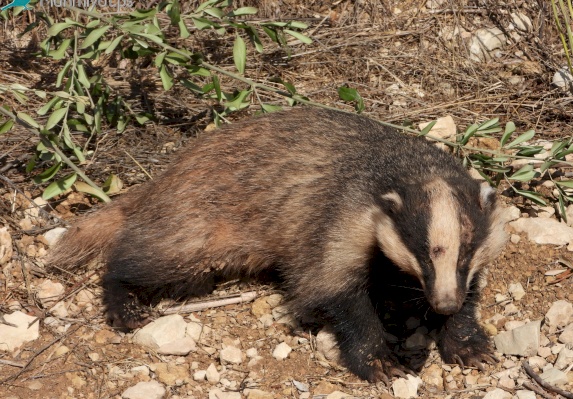Eurasian badger
Picture Resource: By Chris. P (Flickr: Badger 25-07-09) [CC BY 2.0], via Wikimedia Commons
The Eurasian badger belongs to the mustelidae family in the carnivora order. The Eurasian badger is a medium size omnivore (eats both animals and plants), very shy and difficult to spot. It has grey hair covering most of its body and the head has black and white stripes going from the back to the front. The color pattern of the head is very noticeable. It is a nocturnal mammal, opportunistic and generalist- easily adapted to habitat changes and human interference and feeds of great variety of food such as nuts and fruit, bulbs and roots, invertebrates (earth worms, snails and insects) and small vertebrates, alive or dead. The Eurasian badger is usually monogamous and lives in small families, in a network of dens with several openings. The male and the female mates more than just for reproduction but also for relationship maintenance. In the Mediterranean regions the Eurasian badger uses the body fat that was stored and reserved during the summer and fall and can survive through the winter without feeding on animals. In some cases it will even hibernate without lowering the body temperature.
The geographical range of the species goes from Scandinavia in the north to the northern coast of the Mediterranean, from Spain to Afghanistan. It can be found in the Mediterranean region of Palestine in forested and open habitats, and recently was seen also in the eastern valleys.
Conservation status- least concern.
Sites: Beitillu, Umm at-Tut, Wadi Al-Quff nature reserves

